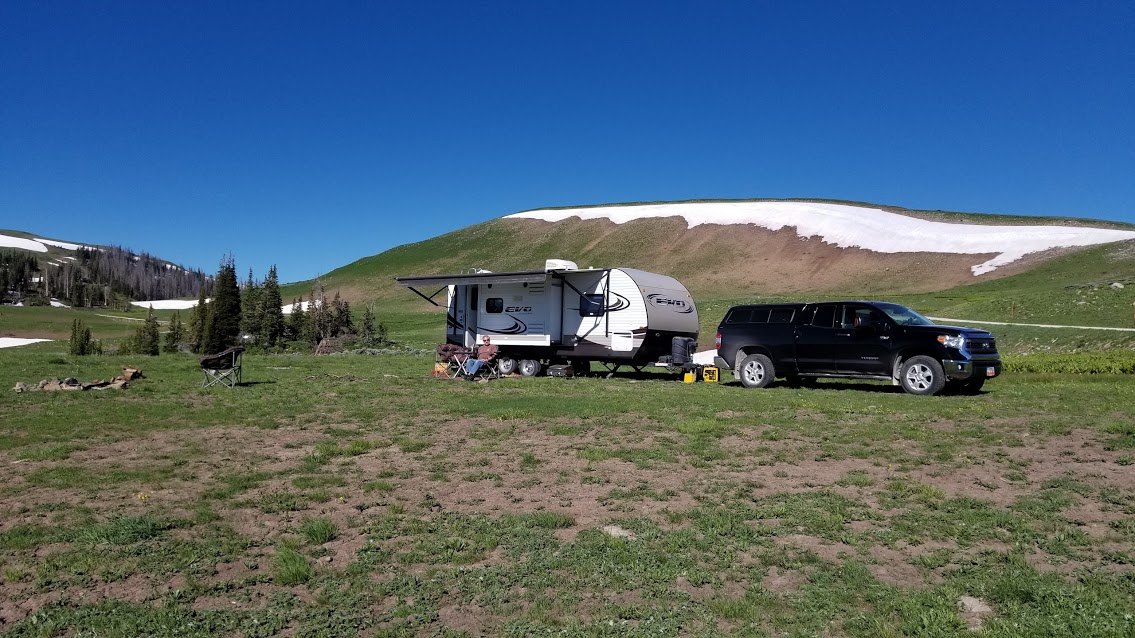
7 Must-Haves For Boondocking In The Summer
Summer is finally here! That means camping season is in full swing and it’s time to take on your camping bucket list items.
For many, one of those bucket list items is going out into the wilderness and boondocking (camping without hookups or a pre-established campsite). This is an excellent goal, and something every camper should experience at least once (if not every day) over the course of their camping lifetime.
That said, boondocking does require a certain number of preparations, especially in the heat of summer when the threat of heat stroke and dehydration is very real.
Unsure how you can prepare for and prevent these emergencies? Lucky for you, we’ve made a handy list of the top summer boondocking essentials. Of course, these items are summer-specific and should never take the place of the items on the usual bookdocking checklist, as the items on the latter will be needed no matter the season. Therefore, you’ll want to make good use of both lists and know you’re going in as prepared as possible.
1. Battery-operated fans
A fan can really help cool down a hot, stuffy RV. For this reason, this is one item you won’t want to be without—hence the reason it made it onto both boondocking lists.
While your rig probably has a vent fan—something that should definitely be put to good use—go ahead and pick up a few battery-operated fans or low-voltage fans as well. For best results, open the windows, turn on the vent fan, and place the battery fans near the windows to pull and circulate more air into the RV.
While this certainly won’t work as well as an A/C, you might be surprised just how much it does do.
2. Good sunshades and an awning
Another thing that can seriously reduce the temperature in a hot RV is shade. Unfortunately, it isn’t always possible to find tall trees in your preferred camping area. This is where man-made shade steps in.
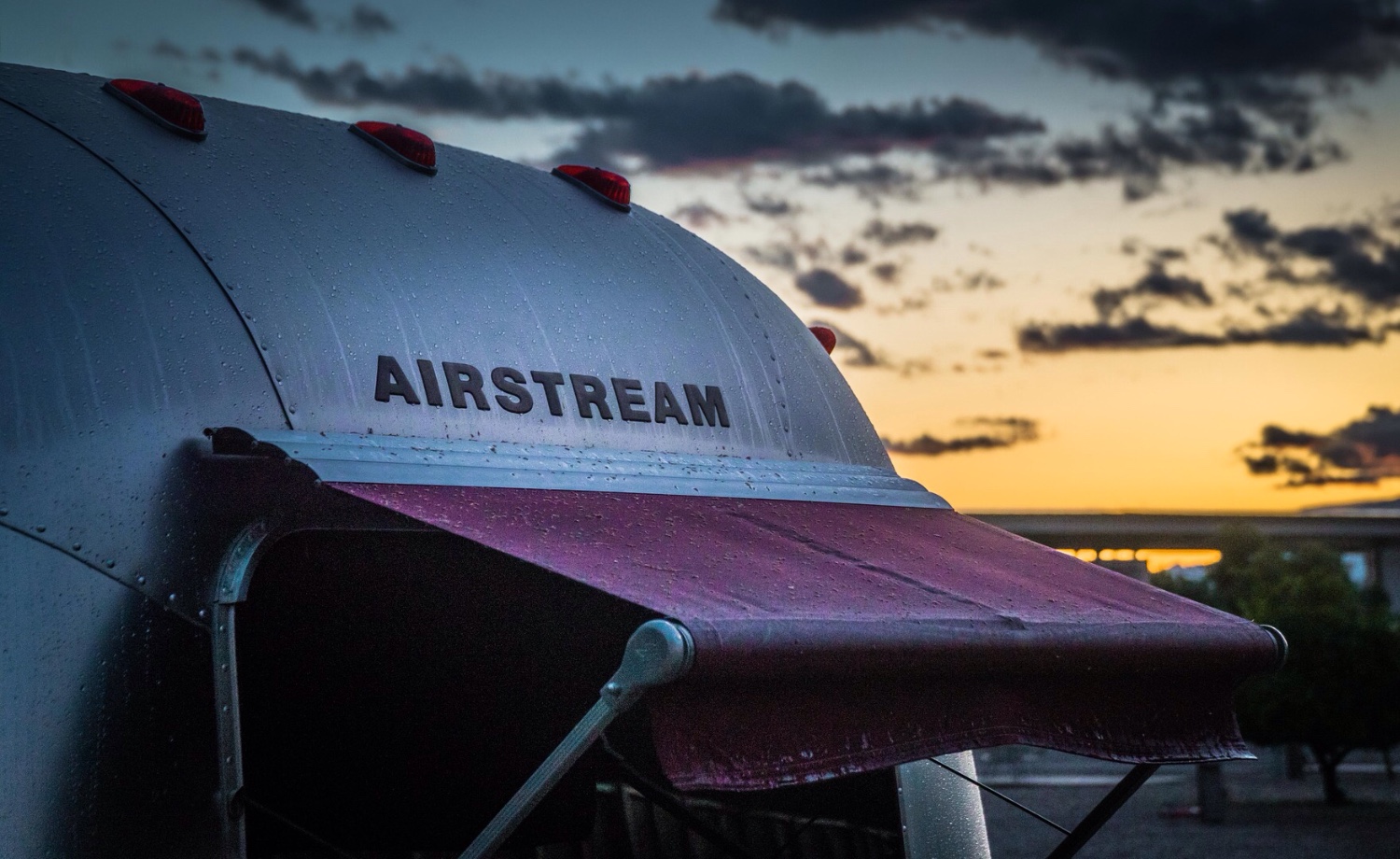
An awning on the outside of your RV—along with a good set of room darkening window shades—should help keep your rig at a comfortable temperature in the middle of the day.
Even if you don’t plan to spend afternoons indoors, these are a good investment because the awning will provide shade outdoors and both items will help keep the interior cool, making it easier to stay comfortable when bedtime rolls around.
3. Ice packs
Ice packs are a great way to keep cool on the hottest summer days. Since most RVs have gas-operated refrigerators and freezers, you can just pop a few of these into your freezer even when you’re not connected to shore power. When you get super hot, pull one out and put it on your neck or forehead to cool down quickly.
Don’t have a propane freezer? Try putting your ice packs in an ice-filled cooler. While they won’t freeze, they will get pretty darn cold and will definitely still feel refreshing.
4. Outdoor grill
Cooking inside the motorhome or travel trailer is only going to make the place hotter. Instead, head outside when it’s time to cook. A simple outdoor grill will make this easy enough to do. Besides, nothing says summer quite like a burger grilled outdoors, and a grilled steak can’t be beaten.
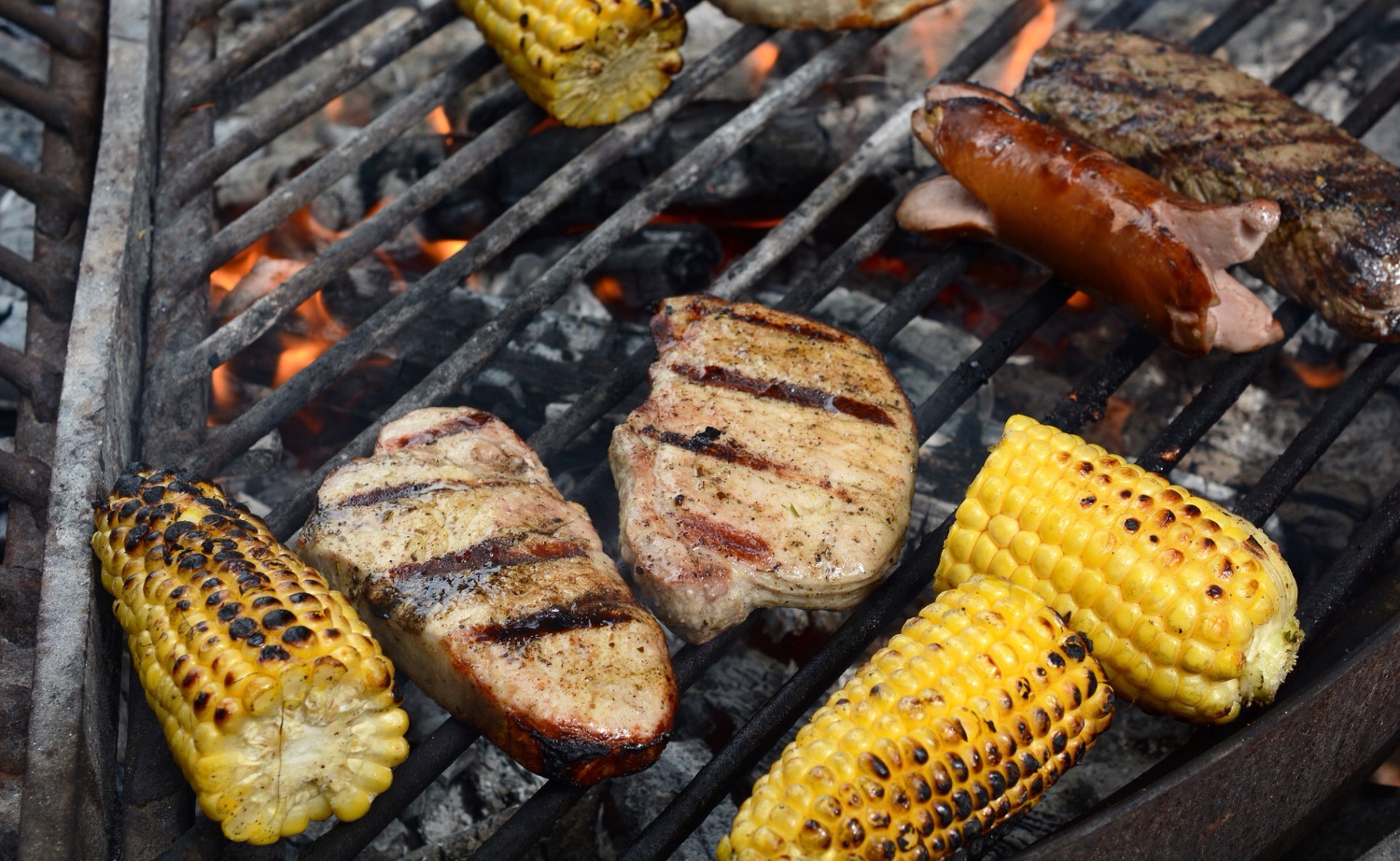
Another option is to cook over a campfire. Who doesn’t like a good campfire meal wrapped in foil and cooked on hot coals, or a hot dog cooked over an open flame? When you’re finished eating, be sure to top off the meal with a delicious s’more!
5. Bamboo sheets
Nobody wants to sleep with a heavy comforter in the summer. This is especially true while summer camping with no A/C. However, sleeping with absolutely nothing covering you will likely feel odd too. In these cases, bamboo sheets can help.
Bamboo fabric is the most breathable and lightweight fabric out there. That means sheets made from bamboo are going to keep you cool even on the warmest summer nights. Slip some on your RV bed and feel the difference for yourself. You’ll be happy you did!
6. Water, water, everywhere
Of course, staying hydrated is always essential, especially you’re when spending time in the heat. Unfortunately, nature doesn’t tend to provide clean water wherever we roam. For this reason, it is crucial that you pack plenty of clean, drinkable water when boondocking in the summer.
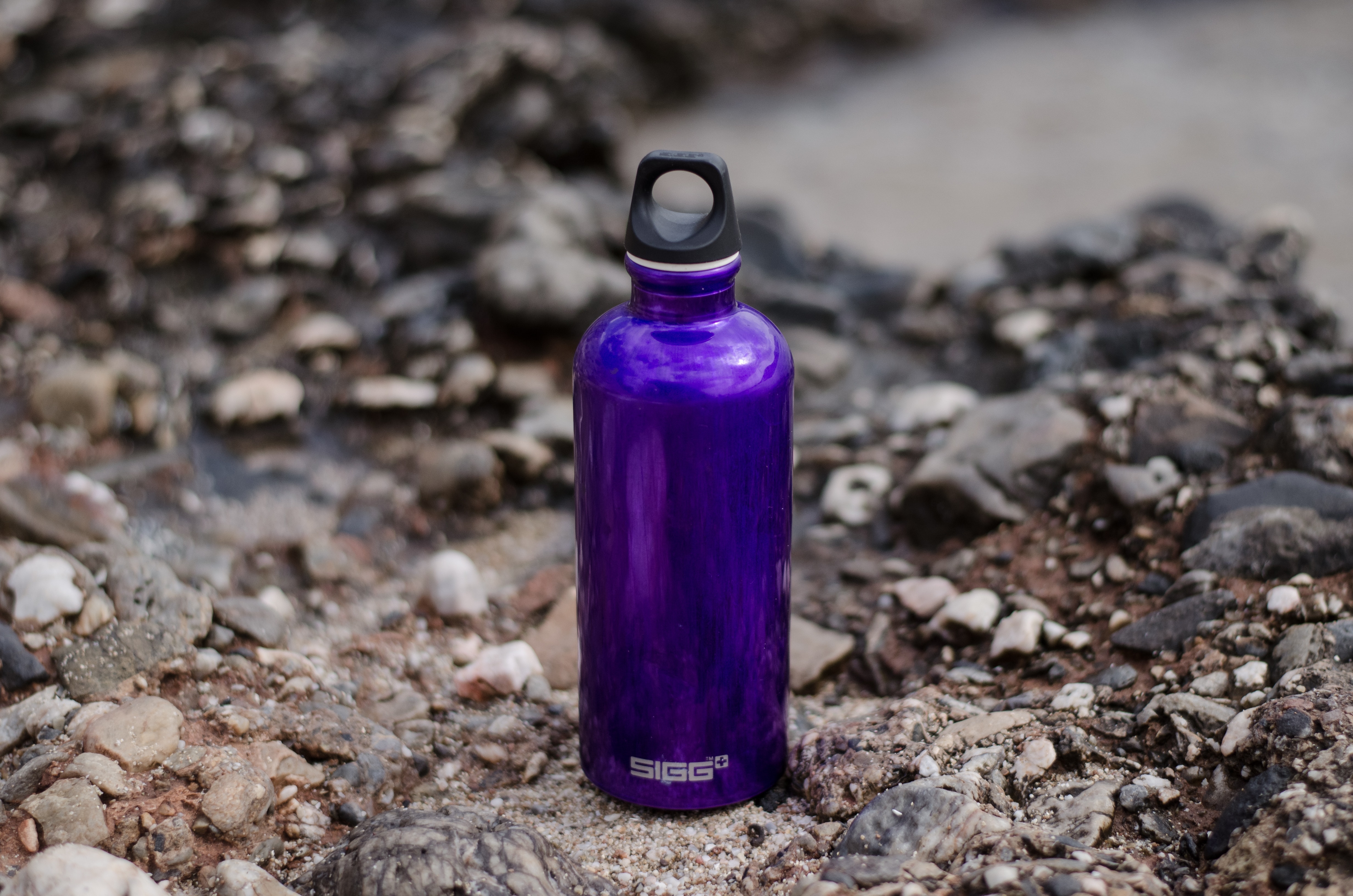
Your freshwater tank should be full when you head out. You may also want to pack several jugs of drinking water in order to ensure you have plenty.
On top of all that, a very thorough filtering system will help ensure you get clean water from nearby sources should you need it. This is great for giving you peace of mind during those blazing hot summer trips.
7. Drying rack or clothesline
Summer camping usually means there will be swimming involved. This is great, as it gives you a chance to cool off while having a great time.
What isn’t great are the wet bathing suits. Typically, these end up hanging to dry in the RV bathroom. The problem is that the moisture in the suits in addition to the heat in the rig can quickly create an environment similar to a sauna. Luckily, this issue is easily solved by hanging the swimsuits outside to dry. Make sure to pack a clothesline or a drying rack, and your humidity problem will be history.
These items may seem simple enough, but they can make a world of difference during the dog days of summer. You’ll definitely want to grab them all before you head out on your next great adventure.


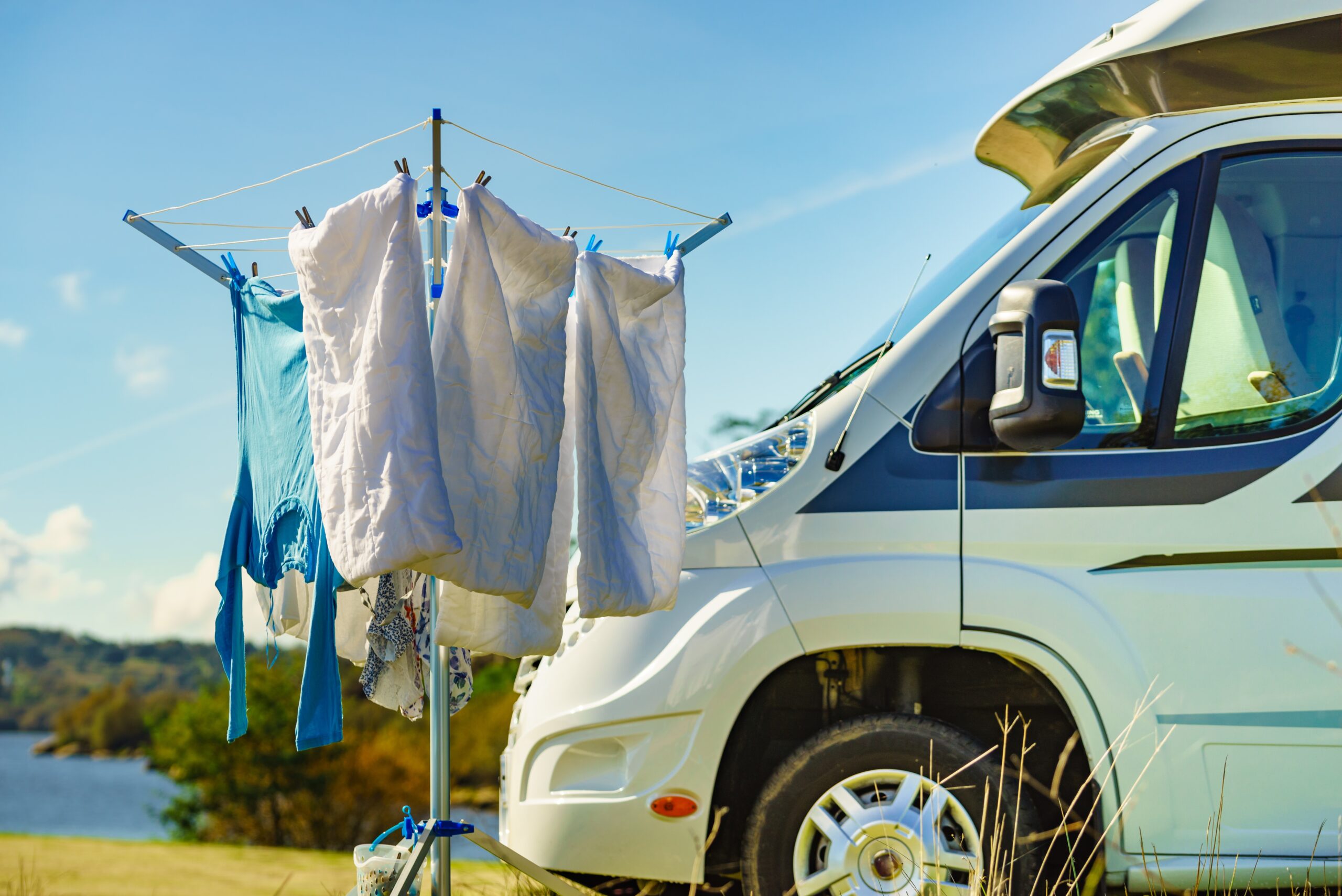
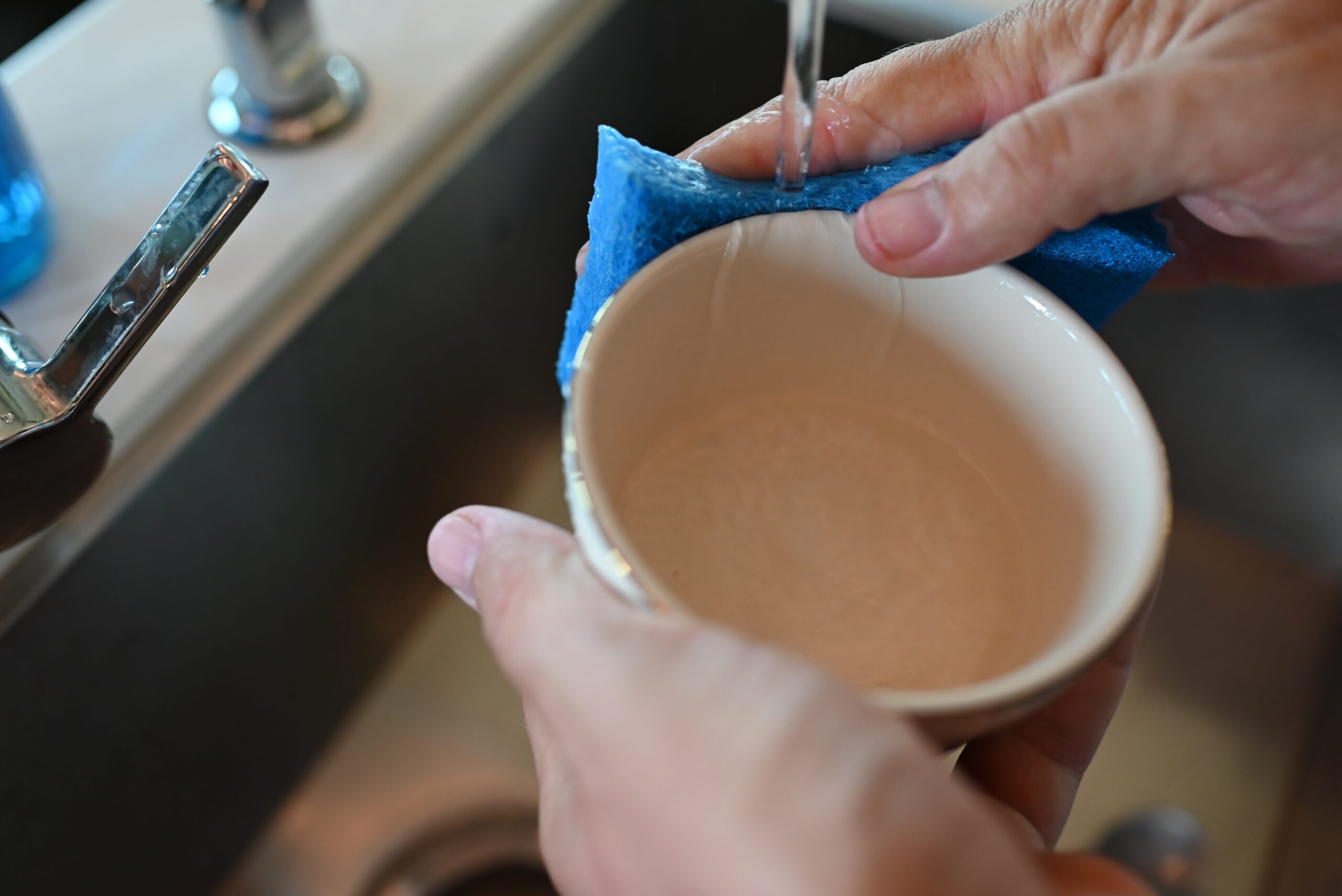
Excellent article!
I love today’s society! Someone is trying to help RVers by taking time, thinking, and writing an article using their experience and knowledge. However, the word “must” is very large and encompassing. I found the article useful. I learned from the contents and I am 67 YO, old enough to know and accept I do NOT know it all.
When I was younger, snowflakes occurred in the winter and made a pleasant sound when they fell to the ground. Now it seems snowflakes exist all year. I was also taught, if you have to say something, say something nice. I wonder if the negative commenters have ever had the tenacity to write, edit, and get an article published?
Rant OFF
Awnings are great when there is no wind. Even when tied down wind can rip the awning away from the camping vehicle. The Sun Setter awning I have at home retracts during during high winds. Angling one side down a bit will reduce the wind effect and allow water to drain where you want during rain storms. When possible I like to have mine extended over a picnic table or one I brought so I can sit and eat or just enjoy happy hour in a comfortable manner.
I read the reviews for Bamboo sheets and they are awful and very expensive. So some things just have to work off of common sense. We boondock and have solar panels so that makes it possible to use our AC when absolutely needed (along with the generator- which we try not to use). Overall some good advice.
Have fun!
I’ve done a fair amount of remote camping and I have some equipment which does make it much easier. Among the items I have for boondocking is a collabsible table assembly I got from Cabella’s. It will hold my gas Coleman stove with no problem. I also have a large canopy or shelter. In addition to the stakes, it also has weights so if the wind comes up I can keep it in place. We really like to use this because it is very large, 10×12, and also has a screen for one side.
If you have room, an outside propane grill is nice when fire danger doesn’t allow open fires. I also like the Blackstone grill/griddle for cooking outdoors. Very nice & easy to use. It comes in different sizes, so take your pick for what you would use best. Many have a cover you can carry it in.
I found I should carry a six gallon water jug when a water line broke and I could not use the camper’s water. Great way to carry extra. If you have an inside kitchen, then you may want to plumb a discharge hose for the Gray water; if you carry a container you can drain the gray into it and dispose of it in the trees, if allowed. I have a plastic tub for dish water and it gets dumped into the trees.